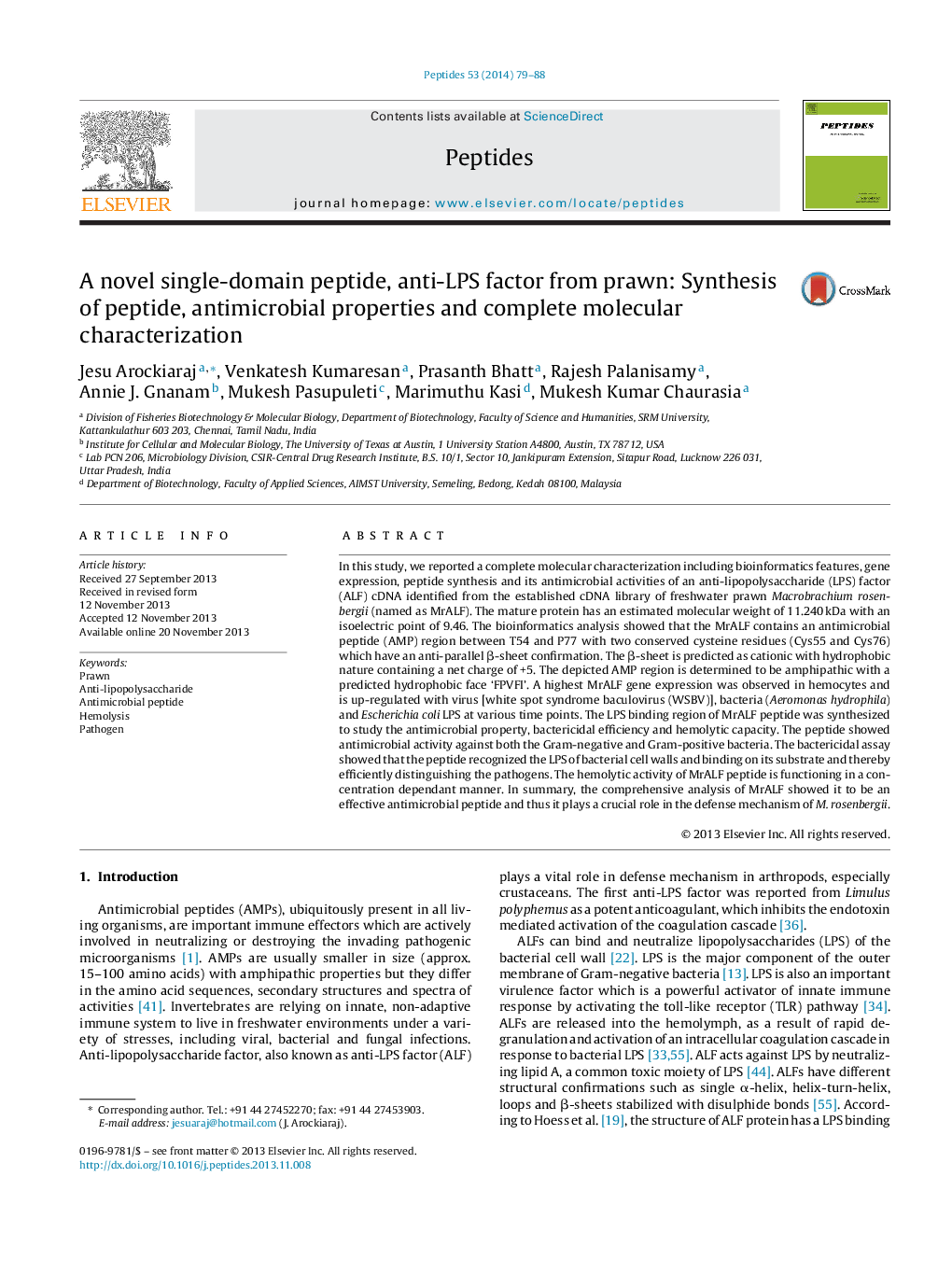| Article ID | Journal | Published Year | Pages | File Type |
|---|---|---|---|---|
| 8348416 | Peptides | 2014 | 10 Pages |
Abstract
In this study, we reported a complete molecular characterization including bioinformatics features, gene expression, peptide synthesis and its antimicrobial activities of an anti-lipopolysaccharide (LPS) factor (ALF) cDNA identified from the established cDNA library of freshwater prawn Macrobrachium rosenbergii (named as MrALF). The mature protein has an estimated molecular weight of 11.240 kDa with an isoelectric point of 9.46. The bioinformatics analysis showed that the MrALF contains an antimicrobial peptide (AMP) region between T54 and P77 with two conserved cysteine residues (Cys55 and Cys76) which have an anti-parallel β-sheet confirmation. The β-sheet is predicted as cationic with hydrophobic nature containing a net charge of +5. The depicted AMP region is determined to be amphipathic with a predicted hydrophobic face 'FPVFI'. A highest MrALF gene expression was observed in hemocytes and is up-regulated with virus [white spot syndrome baculovirus (WSBV)], bacteria (Aeromonas hydrophila) and Escherichia coli LPS at various time points. The LPS binding region of MrALF peptide was synthesized to study the antimicrobial property, bactericidal efficiency and hemolytic capacity. The peptide showed antimicrobial activity against both the Gram-negative and Gram-positive bacteria. The bactericidal assay showed that the peptide recognized the LPS of bacterial cell walls and binding on its substrate and thereby efficiently distinguishing the pathogens. The hemolytic activity of MrALF peptide is functioning in a concentration dependant manner. In summary, the comprehensive analysis of MrALF showed it to be an effective antimicrobial peptide and thus it plays a crucial role in the defense mechanism of M. rosenbergii.
Related Topics
Life Sciences
Biochemistry, Genetics and Molecular Biology
Biochemistry
Authors
Jesu Arockiaraj, Venkatesh Kumaresan, Prasanth Bhatt, Rajesh Palanisamy, Annie J. Gnanam, Mukesh Pasupuleti, Marimuthu Kasi, Mukesh Kumar Chaurasia,
